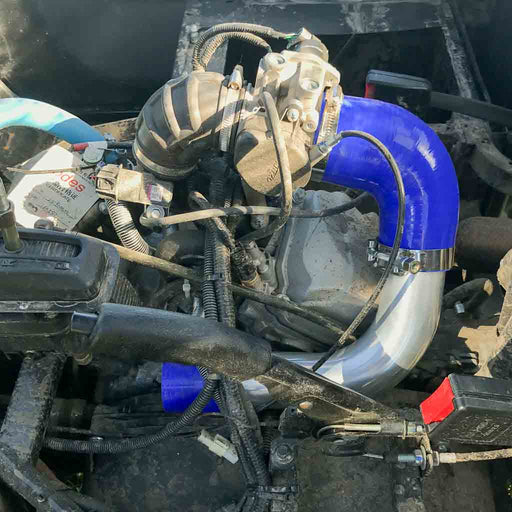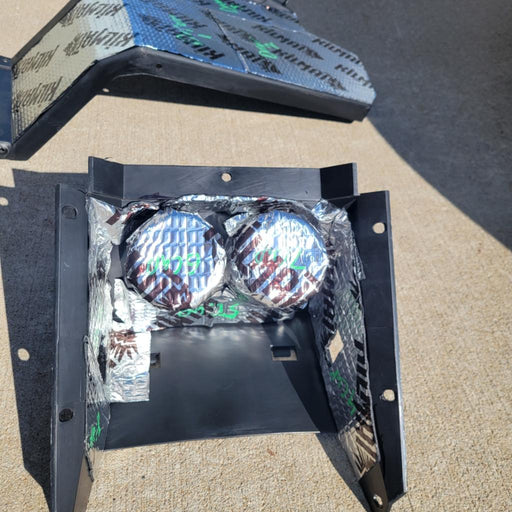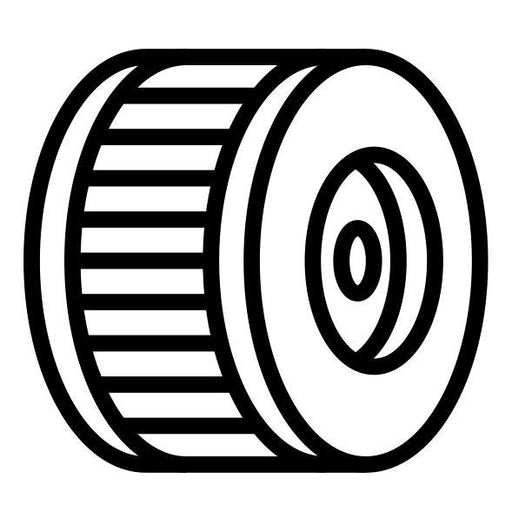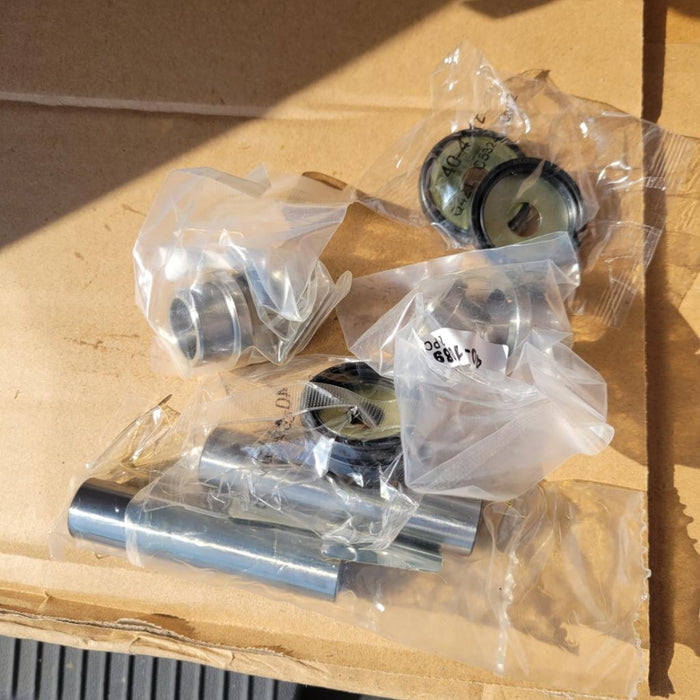
Your ATV Battery Questions: Answered
This week, we're starting a new mini-series. Much like Anatomy of an ATV, we never really planned this, it just sort of happened. You may or may not know that last month, our blog turned a year old year old. To mark the occasion, we wanted to pick the top search terms that led to our site and answer a few of the questions. The more we thought about it, the harder it was to narrow it down. Now that we have our retail space open and are dealers for Odes UTVs, we get more questions than we ever imagined and Ask Us Anything seems like the perfect way to get some of them answered. Sometimes the questions will come from our search terms, sometimes they'll come from customers in our store, and sometimes they'll come from our readers via Facebook. To date, our post on battery types and maintenance is still the most popular item on this site. It only seems fitting that we use our first Ask Us Anything to address some of the questions that aren't mentioned specifically in that post. All of the search terms below are word for word and were pulled from our site analytic programs.
wet cell battery keeps running down
Unfortunately, wet cell batteries are going to run down and need to be refilled. That's just part of a wet cell's lifecycle and there's not much you can do about it. If you find that your acid levels and/or charge are running down quicker than usual, you may be charging it at too high an amperage. When you use too many amps to charge your battery, it causes excess heat. This heat causes the acid to calcify on the plates and evaporate quickly. This combination decreases both the charge capacity and the lifespan of your battery. Keeping your battery on a maintainer is the best way to extend it's lifecycle. A maintainer like a Battery Tender Jr will provide a trickle charge that keeps your battery ready to run no matter what.
how is the best way to store a small atv battery
We preach the Battery Tender pretty hard around here because it's an awesome way to maintain your battery and increase the lifespan. But if you plan on storing your battery for an extended period of time and you don't have access to a maintainer, there are a few guidelines you can use to keep your battery protected. If you're planning on storing your ATV in a shed our outhouse for the winter, we recommend pulling the battery and storing it in a climate controlled environment. The constant temperature will protect the plates or mats inside the cells. It will also help to prevent issues with condensation as the weather begins to warm up. If you don't have access to a maintainer, it's good practice to use a trickle charge at least once per month while the battery is in storage. This keeps the battery charged.
do you have to charge a 4 wheeler battery after adding acid
Whether you're using an Absorbed Glass Mat (AGM) battery or a lead-acid battery, you definitely need to charge it before the first use. Adding the acid to the battery doesn't provide power. For either type of battery, you'll want to wait at least one hour before putting the battery on the charger. In most cases, you'll want to charge the battery for a full day or overnight. The Battery Tender Jr is great not only for maintaining your battery, but the trickle charge is an ideal method for charging your battery for the first time and we use it on all of the batteries we activate in the store. Unfortunately, there is no way to speed up the initial charge without contributing damage to the battery. It may run fine the first time, but quick charges are one of the easiest ways to ruin a battery.
when filling atv battery with acid some leaked
There are a number of things you could be referring to here, but we'll try our best. First, we're assuming you didn't get any on your hands or clothes or in your eyes. If you did, you should back away from Google and go wash up and/or seek medical attention immediately. Once everything is good there, you'll want to make sure the acid in your battery is at the correct level. If it's a traditional lead-acid battery, make sure there is enough acid to meet the bottom line. If it's not, you'll want to add more acid. Charging or running a battery without the correct amount of acid is a great way to destroy it. Refer to our original post on battery maintenance for more details on this. 
If the acid leaked and got on the outside of the battery, a shop floor, or any other surroundings, you'll want to neutralize it before trying to clean it up. Sodium bicarbonate (baking soda) is an excellent way to neutralize battery acid. Make mixture of water and baking soda. No need to be precise, just a lot of baking soda. Then pour it directly onto the spilled acid. (If you're pouring it onto the top of your battery, make sure everything is sealed up good first.) As the baking soda reacts with the acid, the mixture will bubble. You may need to use the baking soda and water more than once. You'll know everything is neutral and safe to clean up when you can pour the mixture and no longer see a reaction. This method is also great for cleaning corrosion off battery terminals. 
-
Original price $ 159.99 - Original price $ 204.99Original price$ 159.99 - $ 204.99$ 159.99 - $ 204.99Current price $ 159.99
Air Filter Relocation Kit for ODES UTVS
Scooter's PowersportsOut of stockOur very own Air Filter Relocation kit for ODES UTVS. Designed and manufactured by Scooter's Powersports. Unlike some ODES Air Filter Relocation K...
View full detailsOriginal price $ 159.99 - Original price $ 204.99Original price$ 159.99 - $ 204.99$ 159.99 - $ 204.99Current price $ 159.99Sold out -
Original price $ 129.99 - Original price $ 159.99Original price$ 129.99 - $ 159.99$ 129.99 - $ 159.99Current price $ 129.99
Pre-Cut Sound Proof Matting for ODES UTVS
Scooter's PowersportsIf the noise inside the cab of your ODES UTV has ever bothered you, this. is your solution. Now you can get one of our best selling shop services a...
View full detailsOriginal price $ 129.99 - Original price $ 159.99Original price$ 129.99 - $ 159.99$ 129.99 - $ 159.99Current price $ 129.99 -
Original price $ 40.00 - Original price $ 40.00Original price$ 40.00$ 40.00 - $ 40.00Current price $ 40.00
Voltage Regulator Relocation Kit for ODES UTVS
Scooter's PowersportsDesigned to move the voltage regulator from under the hood to under the seat. Requested by you and built by Scooter's Powersports. Allows for elimi...
View full detailsOriginal price $ 40.00 - Original price $ 40.00Original price$ 40.00$ 40.00 - $ 40.00Current price $ 40.00 -
 View all ODES UTV Performance mods
View all ODES UTV Performance mods
-
 ODES UTVS best sellers
ODES UTVS best sellers -
Original price $ 38.49 - Original price $ 55.99Original price$ 38.49 - $ 55.99$ 38.49 - $ 55.99Current price $ 38.49
ODES Oil Change Kit for 800 and 1000 Engines
Scooter's PowersportsODES Industries recommends an engine oil change at 25-hours of run time or 1000 miles. (We won’t tell if you turn that down to once every 50-hours ...
View full detailsOriginal price $ 38.49 - Original price $ 55.99Original price$ 38.49 - $ 55.99$ 38.49 - $ 55.99Current price $ 38.49 -
Original price $ 7.99 - Original price $ 7.99Original price$ 7.99$ 7.99 - $ 7.99Current price $ 7.99
ODES Oil Filter - High-Performance
Not specifiedHigh-performance aftermarket ODES oil filter. Compatible with 800cc and 1000cc ODES engines. Be sure to select your make and model before adding to...
View full detailsOriginal price $ 7.99 - Original price $ 7.99Original price$ 7.99$ 7.99 - $ 7.99Current price $ 7.99 -
Original price $ 49.99 - Original price $ 62.00Original price$ 49.99 - $ 62.00$ 49.99 - $ 62.00Current price $ 49.99
Pivot Works Wheel Bearing Kit for ODES - Lifetime Replacement!
Pivot WorksPivot Works wheel bearing kit for 2012+ 800cc and 1000cc UTVs from ODES Industries. Fitment includes the Short Travel (Standard) suspension and the...
View full detailsOriginal price $ 49.99 - Original price $ 62.00Original price$ 49.99 - $ 62.00$ 49.99 - $ 62.00Current price $ 49.99 -
Original price $ 159.99 - Original price $ 204.99Original price$ 159.99 - $ 204.99$ 159.99 - $ 204.99Current price $ 159.99
Air Filter Relocation Kit for ODES UTVS
Scooter's PowersportsOut of stockOur very own Air Filter Relocation kit for ODES UTVS. Designed and manufactured by Scooter's Powersports. Unlike some ODES Air Filter Relocation K...
View full detailsOriginal price $ 159.99 - Original price $ 204.99Original price$ 159.99 - $ 204.99$ 159.99 - $ 204.99Current price $ 159.99Sold out -
Original price $ 40.99Original price $ 40.99 - Original price $ 40.99Original price $ 40.99Current price $ 36.95$ 36.95 - $ 36.95Current price $ 36.95
ODES 800cc Air Filter | 21040401001
ODES IndustriesOut of stockOEM air filter for ODES 800cc engines. Vehicle Fitment This part is compatible with the following vehicles 2012+ ODES Dominator 800 2015+ ODES Dom...
View full detailsOriginal price $ 40.99Original price $ 40.99 - Original price $ 40.99Original price $ 40.99Current price $ 36.95$ 36.95 - $ 36.95Current price $ 36.95Sold out -
Original price $ 18.99 - Original price $ 18.99Original price$ 18.99$ 18.99 - $ 18.99Current price $ 18.99
Fast Boot Kit
MooseOut of stockExtremely heavy duty CV boot that fits virtually all ATVs and UTVs. Additional rib to allow boot to expand for larger joints Improved clamp retain...
View full detailsOriginal price $ 18.99 - Original price $ 18.99Original price$ 18.99$ 18.99 - $ 18.99Current price $ 18.99Sold out -
Original price $ 29.99 - Original price $ 29.99Original price$ 29.99$ 29.99 - $ 29.99Current price $ 29.99
ODES Ball Joint Kit
Scooter's PowersportsODES ball joint kit for 800cc and 1000cc ODES UTVs. ODES Ball Joint Kit Includes (1) Ball joint (1) Circlip (1) Cotter pin (1) Nut Each kit provi...
View full detailsOriginal price $ 29.99 - Original price $ 29.99Original price$ 29.99$ 29.99 - $ 29.99Current price $ 29.99















